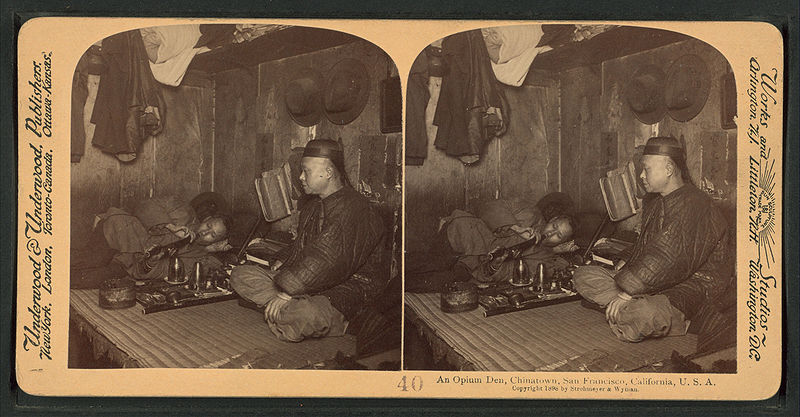California and the War on Drugs

California has had the longest history involving drugs of any U.S. state. From complete drug freedom to strict prohibition, California has evolved its drug policy for over a century — but how far are we from achieving a truly fair, effective, and preventative public health policy?
Origins
The end of the 18th century was the “high” tide of mainstream drug use—a time when Americans could freely purchase any drug they wanted, including opium, cocaine, and cannabis extracts. During this time, California became known as “the dope fiend’s paradise,” and subsequently became the first state in the West to prohibit so-called narcotics.
After the Gold Rush, Chinese opium was widely available, and the effects of opium addiction quickly became a public health concern in California. Passed at the height of anti-Chinese hysteria, San Francisco enacted the nation’s first anti-narcotics bill, outlawing public opium dens in 1875. In 1907, California passed an unprecedented pharmaceutical restriction of opiates and cocaine, and eventually cannabis in 1913. The Board of Pharmacy launched an aggressive campaign and pioneered the modern tactics of drug enforcement. They hired undercover agents who posed as suffering patients, wheedling drugs from unsuspecting pharmacists and then arresting them. This marked the beginning of the war on drugs in California.
Propaganda and Prison
The anti-drug campaigns of the 1920s and 30s were the first introduction to narcotics for many Americans. The myth of “reefer madness” — spread by propagandists such as William Randolph Hearst and Harry Anslinger — heightened public concern and fear of certain drugs, often those associated with racial stereotypes. This caused increased restrictions and arrests involving Chinese opium, African cocaine, and Mexican cannabis. By 1930, marijuana had reached nearly 60% of arrests in Los Angeles and 26% statewide, in a year where there were 878 total narcotics arrests.
_01.JPG)
A colorized still from the film, Reefer Madness
After World War II, the anti-drug efforts reached new heights: penalties for possession of narcotics were hiked to a minimum of 1-10 years in prison, and sale was made punishable by 5-15 years. Two prior felonies raised the maximum sentences for both offenses to life in prison, which put most of America’s addicts in prison rather than drug treatment. As black market dealers moved in, drugs were labeled a “criminal” problem and became subject to social stigmas. Yet this did nothing to prevent a surge in popularity of recreational drugs in the late 1950s. For example, marijuana arrests in California soared from 140 in 1935 to 5,155 per year in 1960. And over the next decade, the trend exploded into a mass phenomenon, propelled by the 60s counterculture.
The War on Drugs
In June 1971, President Nixon declared a “war on drugs,” which would continue throughout the 70s and 80s. Rates of incarceration skyrocketed, largely thanks to Nixon and Reagan’s unprecedented expansion of the drug war policy. California was overwhelmed by the law enforcement costs. The Moscone Act was passed in 1975, eliminating prison sentences for minor marijuana offenders. In spite of this, the number of people incarcerated for nonviolent drug offenses increased nationally from 50,000 in 1980 to over 400,000 by 1997.

But just as California was one of the first states to prohibit the use of marijuana, it also became the first state to establish a medical marijuana program, enacted by Proposition 215 in 1996 and Senate Bill 420 in 2003. As the state with the longest historical experience with drug laws, it makes sense that California explored new directions out of its 100-year war on drugs. Since then, twelve other U.S. states have followed California's lead to enact medical marijuana laws of their own: Alaska, Colorado, Hawaii, Maine, Michigan, Montana, Nevada, New Jersey, New Mexico, Oregon, Rhode Island, Vermont, and Washington.
Today, we are still learning to accept the place of drugs in our society, and the debate over legalization still rages in California. Proponents of legalization believe that by taxing the substance, incorporating it into our economy, and incarcerating less people, the state will profit and reduce criminal activity. Detractors believe that by allowing a controlled substance to flourish, more people will become addicted, requiring treatment and becoming a greater public health issue. Yet today's addiction rate is more than twice what existed during the free market a century ago — only about one-half percent. Is it time to end the war on drugs for good?

